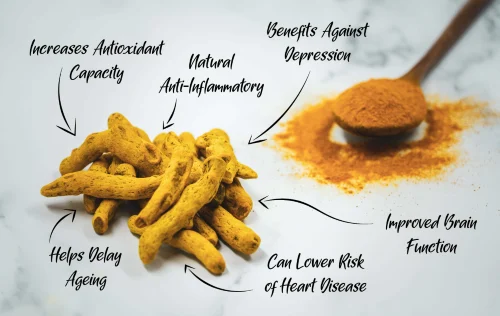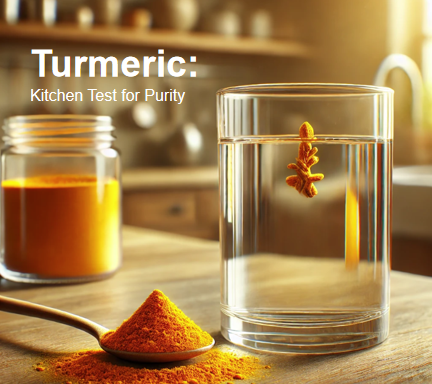1️⃣ Introduction
Turmeric is widely known for its health benefits, but the real challenge lies in purchasing pure, unadulterated turmeric powder. Many store-bought turmeric powders contain additives, synthetic dyes, or fillers that compromise quality. Learning to identify pure turmeric ensures that you reap its full medicinal and culinary benefits.
2️⃣ Common Adulterants in Turmeric Powder
Adulteration is a major concern in commercially available turmeric. Some common contaminants include:
- Metanil Yellow & Lead Chromate: Used to enhance color but highly toxic.
- Starch or Flour: Added to increase weight and volume.
- Artificial Dyes: Some manufacturers use chemical dyes to mimic the rich yellow hue of turmeric.
- Chalk Powder or Clay: Mixed to bulk up the product but reduces purity.
3️⃣ Tests to Identify Pure Turmeric Powder
🏠 Home Tests for Purity
✅ Water Test: Add a teaspoon of turmeric to a glass of warm water. Pure turmeric will settle at the bottom, while adulterants may leave streaks or dissolve unnaturally.
✅ Lemon Juice Test: Mix turmeric with a few drops of lemon juice. If it turns pink or reddish, it contains synthetic colorants.
✅ Alcohol Test: Add a pinch of turmeric to a small amount of alcohol. If it immediately turns bright yellow, it may contain artificial dyes.
✅ Iodine Test: Add iodine to turmeric. If it turns blue, starch has been added as an adulterant.
🏭 Lab Tests for Enhanced Accuracy
🔬 Spectroscopic Analysis: Identifies chemical composition and purity.
🔬 Chromatographic Testing: Detects synthetic dyes and adulterants.
🔬 Heavy Metal Testing: Ensures it’s free from lead and other harmful metals.
4️⃣ How to Choose Pure Turmeric Powder
✔ Buy from Trusted Brands: Opt for organic, certified sources that provide lab-tested purity reports.
✔ Check the Label: Look for “100% pure turmeric” and verify certifications such as USDA Organic or FSSAI.
✔ Observe Color & Texture: Pure turmeric is bright yellow-orange with an earthy aroma, while adulterated versions may appear too bright or dull.
✔ Taste & Smell Test: Pure turmeric has a slightly bitter, earthy taste and a distinct aroma. If it smells musty or chemical-like, it may be adulterated.
✔ Go for Whole Turmeric Roots: If possible, buy whole dried turmeric roots and grind them yourself to ensure authenticity.
5️⃣ Conclusion & Call to Action
Ensuring the purity of turmeric powder is essential for health and wellness. Simple home tests and careful selection can help you avoid adulterated products. Always buy from reputable sources and consider grinding whole turmeric at home for the best quality.

What happens when you don’t eat pure turmeric powder
If you don’t eat pure turmeric powder and instead consume adulterated or low-quality turmeric, several things could happen:
1. Reduced Health Benefits
- Pure turmeric contains curcumin, which has anti-inflammatory, antioxidant, and immune-boosting properties.
- Adulterated turmeric may have lower curcumin content, reducing its effectiveness.
2. Potential Health Risks
- Some low-quality turmeric powders are mixed with artificial colors (like lead chromate), which can be toxic and cause health issues such as kidney damage or neurological problems.
- Some contain starch or chalk powder, which may cause digestive discomfort.
3. Weaker Taste and Aroma
- Impure turmeric lacks the strong earthy flavor and aroma that pure turmeric provides, making your food taste less authentic.
4. Less Effective in Remedies
- If you use turmeric for skin care, healing wounds, or cold remedies, impure turmeric may not work as well.
Stay informed and choose pure turmeric for better health! Explore more herbal guides at Herbopedia.fyi!
